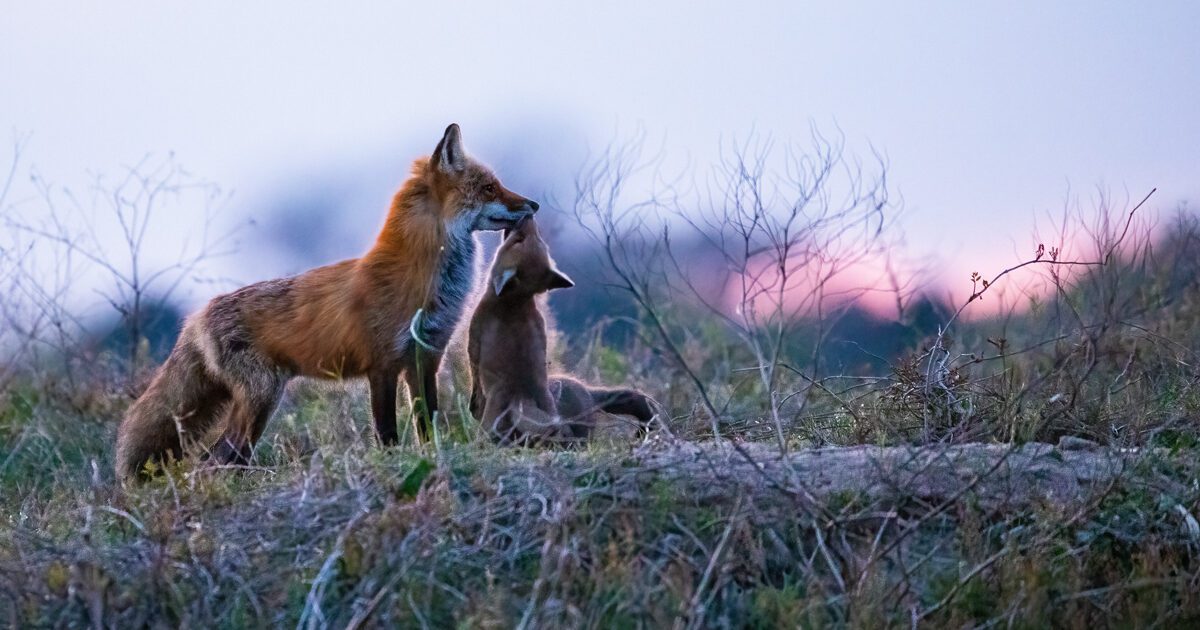
PFAS Negative Impacts Amongst Virginia Species
Do you enjoy watching cottontail rabbits scurry through your yard, hearing red foxes bark in the woods at night, and even fishing for catfish in the creek? If so, you may be concerned to find out that the presence of per- and polyfluoroalkyl substances (PFAS) in the environment is negatively impacting these beloved Virginia species. In recent years, PFAS has emerged as a significant environmental threat across the United States, including the picturesque state of Virginia.
PFAS, a class of roughly 12,000 chemicals, are toxic substances found nearly everywhere. PFAS have been used in various industries since the 1940s due to their heat-, stain-, grease-, and water-resistant characteristics (USGS 2022). For this reason, they are found in everyday consumer products such as non-stick packaging and cookware, stain-resistant carpeting and fabrics, and even firefighting foam. PFAS have been dubbed “forever chemicals” because they do not break down easily, meaning they are nearly impossible to remove from the environment once they have been introduced.
People can be exposed to PFAS through various means, including drinking contaminated water, eating fish that have been exposed to PFAS, eating from certain fast-food containers like pizza boxes and microwave popcorn bags, and even breathing air containing PFAS. This exposure can cause countless health problems to humans. However, scientists have recently become aware that PFAS equally impacts wildlife, which can be exposed to PFAS through a variety of means, including living in a polluted ecosystem, drinking contaminated water, and eating crops that have been exposed to biosolids (organic matter recycled from sewage). Studies have shown that PFAS impact nervous system functions, damage organs, cause tumor growth and cancers, and impair reproduction in both humans and animals (Guynup 2023).
Some species are more at risk of PFAS exposure than others depending on where they reside on the food chain. Research shows that these toxins accumulate higher amounts in species higher in the food chain through a process called biomagnification. While plankton may have small traces of PFAS in their systems, larger species like predatory birds accumulate much larger amounts by eating organisms contaminated with PFAS (Schauffler 2023). In local Virginia ecosystems, a raccoon would likely have less PFAS contamination than a coyote or black bear. However, any PFAS exposure is undesirable, as they are toxic at extremely low levels (Ginty 2023).
So what can you do to help protect Virginia wildlife from PFAS? You can replace nonstick pans with stainless steel, cast-iron, glass, or ceramic alternatives; avoid heating up food in grease-resistant packaging; and keep in mind that BPI-certified packaging does not contain PFAS. Avoid purchasing furniture, rugs, and bedding that are water- or stain-resistant. Additionally, you can participate in environmental education efforts and advocate for a cleaner environment by reaching out to your state and federal governments about your concerns.
With these things in mind, we can work to move toward a PFAS-free future and protect Virginia’s wildlife, keeping Virginia wild for generations to come.
Featured photo donated by Lori A Cash.
(2023, September 26). Global danger: Threatened and Endangered Species at risk from Pfas Exposure. Global danger: Threatened and endangered species at risk from PFAS exposure.
Ginty, M. M., & Lindwall, C. (2023, April 12). “Forever chemicals” called pfas show up in your food, clothes, and home. Be a Force for the Future.
Guynup, S. (2023, September 26). Pfas “Forever Chemicals” harming wildlife the world over: Study. Mongabay Environmental News.
Pfas investigations at the Virginia and West Virginia Water Science Center active. PFAS Investigations at the Virginia and West Virginia Water Science Center | U.S. Geological Survey. (2022, December 22).
Schauffler, M. (2023, May 31). Testing the waters: Tracing the movement of pfas into waterways and Wildlife. The Maine Monitor.